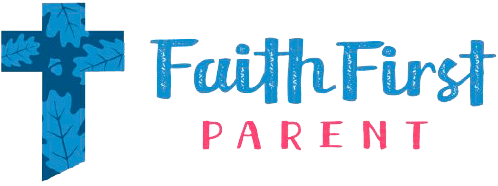Point to Prayer
Prayer provides peace for the people of God, providing a sanctuary in moments of fear, doubt, and crisis. Prayer also gives us the power to go on. “The LORD gives strength to his people; the LORD blesses his people with peace (Psalm 29:11 NIV). Peace is exactly what families need today. That peace comes through prayer.
As a parent, I have prayed for years for protection, discernment, wisdom, … a whole host of requests for my children. Paul reminds us in Philippians 4:6, “Do not be anxious about anything, but in every situation, by prayer and petition, with thanksgiving, present your requests to God.” He writes not to be anxious about anything, not just some things. God wants to hear it all. What in your life makes you fearful rather than faith-filled? Fear envelops faith if allowed to persist.
Because of Jesus’s gift to mankind on the cross, the curtain was torn in two allowing believers access to the throne room of the Most High. No prayer is insignificant. No request too small or too large. We need not go it alone. In our “I can do all things” society, we often forget Who can do all things. This is an important lesson for parents to teach their children.
Think of a relationship you treasure; your spouse, child, parent, friend. No doubt you enjoy spending time with this person, sharing life experiences. A relationship with the Lord is the same, a shared time of communication, speaking and listening, sometimes asking the hard questions.
Along with the Bible, prayer is our main tool for conversing with the Lord. Children are wired for prayer. Betty Shannon Cloyd writes in Children and Prayer: A Shared Pilgrimage, of a study conducted by Dr. Robert Coles. Children in a variety of social, economic, cultural, geographic, and religious backgrounds were interviewed regarding their understanding of God. Dr. Coles’ findings were amazing. He concluded children everywhere “have a deep awareness of God and the spiritual life.”1 Betty Shannon Cloyd goes on to tell of her own ministry to children and the deep connection and trust she witnessed between children and God. “In child-like faith, they present their needs to God trusting in a God who is able and willing to answer.”2
Nurture and assist your children in developing a desire to draw near to the Lord in prayer. One of the most powerful ways this can be done is through modeling prayer. Children may not do as we say but they always do as we do. If a parent prays, children will pray. This becomes a natural part of family life. My husband, Scott, and I have daily prayed for our boys as they leave for school. Even on hurried mornings, they waited to be blessed before heading out the door. “For where two or three gather in my name, there am I with them” (Matthew 18:20).
Mark your day with prayer. Emergency arrow prayers, rote memorization, prayers of thanksgiving, and requests for forgiveness can punctuate the day’s activities. End the day with prayer too. Children learn conversing with God matters.
There are many prayer models available to teach children to pray. In our 1 Corinthians 13 Parenting classes, Lori and I train parents to use a variety of prayer models with their children. Here are some suggestions.
• The ACTS (adoration, confession, thanksgiving, supplication) covers all the bases. Children learn first to adore God by listing His attributes. Confession clears to way for earnest prayer. A thankful heart takes into consideration all God has provided before the requests begin. The relationship grows and God is not easily taken for granted when the scope of prayer is broad and worshipful as compared to a laundry list of wants.
• Memorized prayers infuse prayer into a child’s day. “Rote prayers are a simple way for young children to pray. By age four, a child can begin to use his own words to speak with God. Teaching a child to pray is valuable. You amy not always be able to be there for your child, but God is.”3 Additional suggestions for leading your child in prayer can be found in Raising Little Kids with Big Love and Raising Big Kids with Supernatural Love.
• Body prayers allow for a kinesthetic experience for children. Touch the mouth and pray for kind words to be spoken, the eyes to see those in need, the hands to help others, the ears to hear God’s voice, the heart to be open to Jesus and so on.
• Anxious days (new school, spelling test, etc.) call for the Alphabet Prayer. Listing God’s attributes in alphabetical order puts a burdened mind in a different place. Focusing on the goodness of God pushes worry out of the way.
• Scripture is a wonderful tool to use in prayer with children. Use the concordance to find the area in which your child is struggling. For example, Psalm 4:8 can be used at bedtime to alleviate fear by inserting the child’s name into the text. “In peace Anna will lie down and sleep, for you alone, LORD, make Anna dwell in safety. Amen”
Prayer is a gift from God to deepen our faith and to allow us to draw near to the Lord. As children are taught that Jesus is our Intercessor, they realize the great love of their Savior. He hears every word. Comfort and peace comes from believing the Lord of the universe cares enough and loves so much as to listen to the quiet prayers of a child.
The LORD gives strength to his people; the LORD blesses his people with peace.
Psalm 29:11 NIV
[ctt template=”4″ link=”Iikcq” via=”yes” ]Do you ever let fear envelop your faith? [/ctt]
Notes
1. Betty Shannon Cloyd Children and Prayer: A Shared Pilgrimage (Nashville: The Upper Room, 1997) 19.
2. ibid, 21.
3. Lori Wildenberg & Becky Danielson, M.Ed. Raising Little Kids with Big Love (Friendswood, Bold Vision Books, 2014) 159.
©2015 Becky Danielson. All rights reserved.

